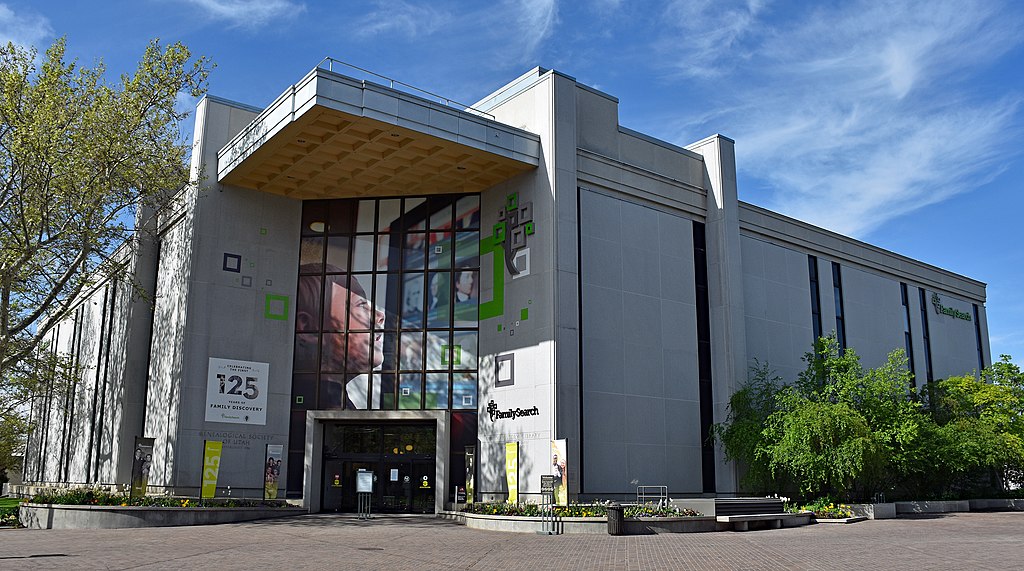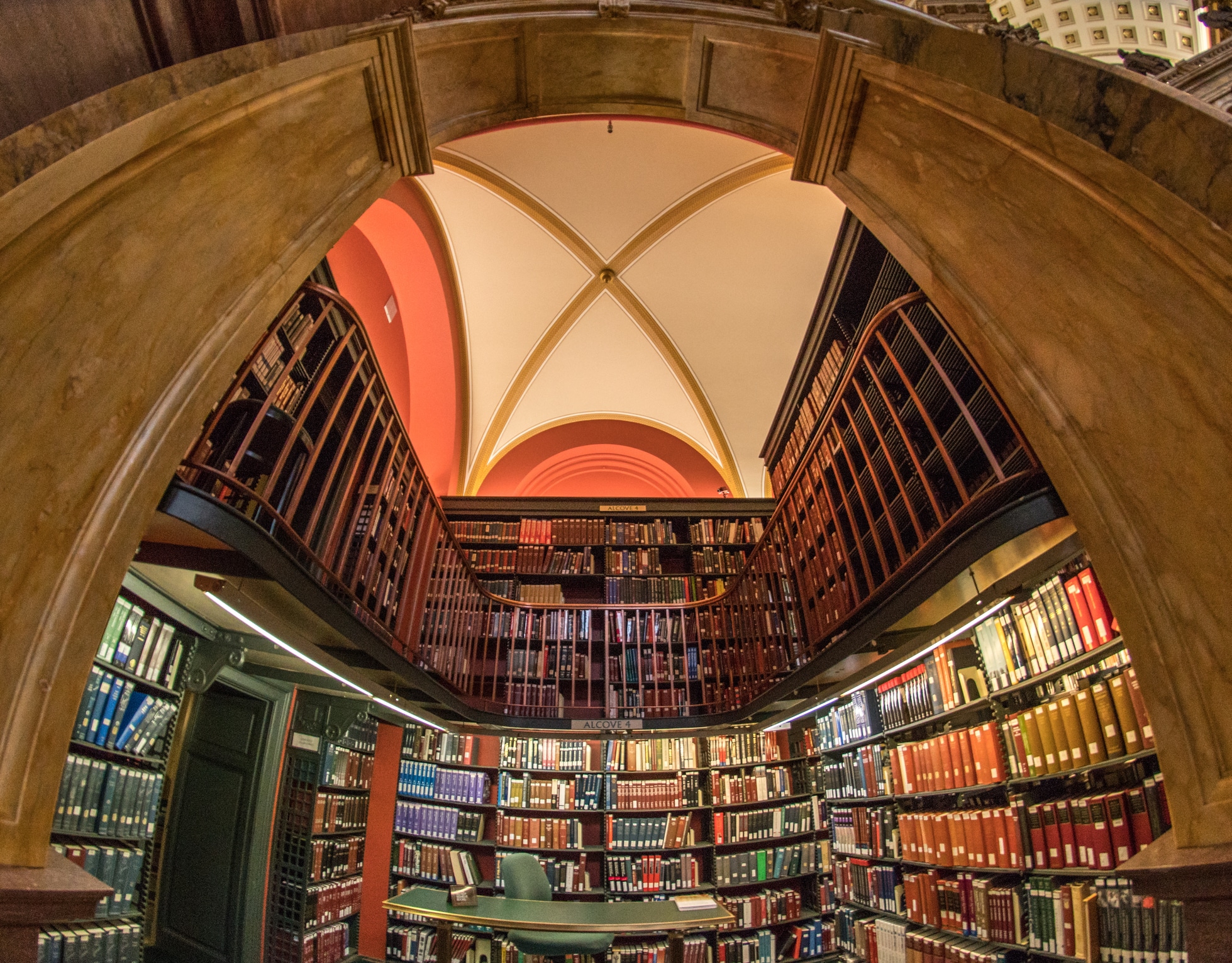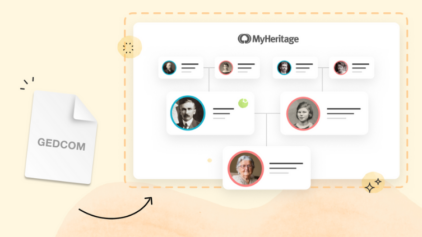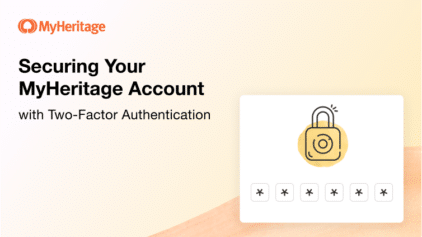Daniel’s Favorites: 5 Amazing Archives Well Worth a Visit
- By Daniel Horowitz ·
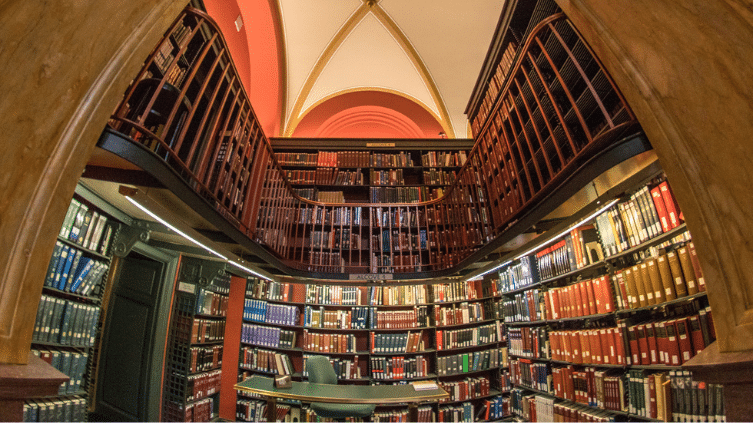

Historical archives are the bread and butter of anyone doing serious research about their family history. And while no one is happier than I about the amount of research you can do online — MyHeritage is currently home to 18.8 billion historical records and counting! — there’s nothing quite like taking a trip to a physical archive and holding the documents in your own two hands.
The advantages of visiting physical archives are not just sentimental. Sometimes, digitized records don’t include high-quality scans, and you can only view the full record at the archive. Even when you can access a good scan of the record, there may be additional information scrawled on the reverse side or on the margins that isn’t visible in the image.
I’ve had the opportunity to visit quite a few archives, whether because I was searching for something specific or because I was interested in the general history of the place. I’m almost never disappointed!
Below are 5 of my favorite archives to visit throughout the world.
1. Family History Library, Salt Lake City, Utah
Though this post is supposed to feature my favorite archives, I have to say that my top choice is actually a library: the Family History Library in Salt Lake City.
This place is known as the Disneyland for genealogists, because it’s a 5-story building that is full of records: books, papers, microfilm, maps, everything you need to research your family, no matter where in the world your family is from. They also stock all the equipment you might need: computers, scanners, copy machines, and so on. But most importantly, there are volunteer experts from FamilySearch who work in the library every day and are available to help you and guide you with your research, not only in terms of the types of records that you might need or what you should be looking for, but also helping interpret records in different languages.
If you’re planning to attend RootsTech this year, be sure to set aside some time to visit the Family History Library!
2. The National Archive, London, U.K.
My second choice would be the National Archive located in Kew Gardens in London — for many reasons.
Let me tell you about my experience with this archive. Normally, if I’m arriving or leaving London on a very early or very late flight, I have the opportunity to take the Tube to the Kew Garden station. There is a little shop right next to the Tube that will watch your suitcase for you for a small fee. There are no lockers, you simply download this app to request and pay for them to keep an eye on your luggage. I use this service because I learned the hard way that the archive limits the size of the things you can leave in their on-premises lockers. Many, many years ago, I went there directly with my suitcase in tow, and I left it there with no problem, but during my last visit just a couple of years before COVID, I discovered that they don’t allow large suitcases on the premises. If you’re traveling with a small carry-on or a backpack, you can just walk straight to the archive from the Tube station and register to leave your things in their locker room.
You are allowed to bring only the following into the reading room:
- Your phone
- Your computer
- A pencil, with no eraser (don’t worry, the employees will remove the little eraser at the end of a regular pencil!)
- A mandatory access card that will be created for you on the spot
One reason I love this archive is that you can go online and request material in advance, and it will be waiting for you when you arrive. They will assign you a table, and a numbered locker in the reading room where they place the material. But you can still request extra material as you enter the reading room.
What I recommend doing is going over a couple of materials that you’ve ordered online, then ordering more material from the computers on site. By the time you’ve finished reviewing the materials you have in hand, they will have brought you the new materials. This will save you some waiting time.
When I visited this archive, I found a lot of important records for my own family, such as my grandparents and even my father, who was actually born in Trinidad under the British Empire. I also found many lists of people in Palestine under the British Mandate that I digitized and helped the Israel Genealogy Research Association publish online.
3. The National Archive, Washington D.C., U.S.
There are many branches of the National Archive of the United States, but the one I’m most familiar with is the one in Washington, D.C.
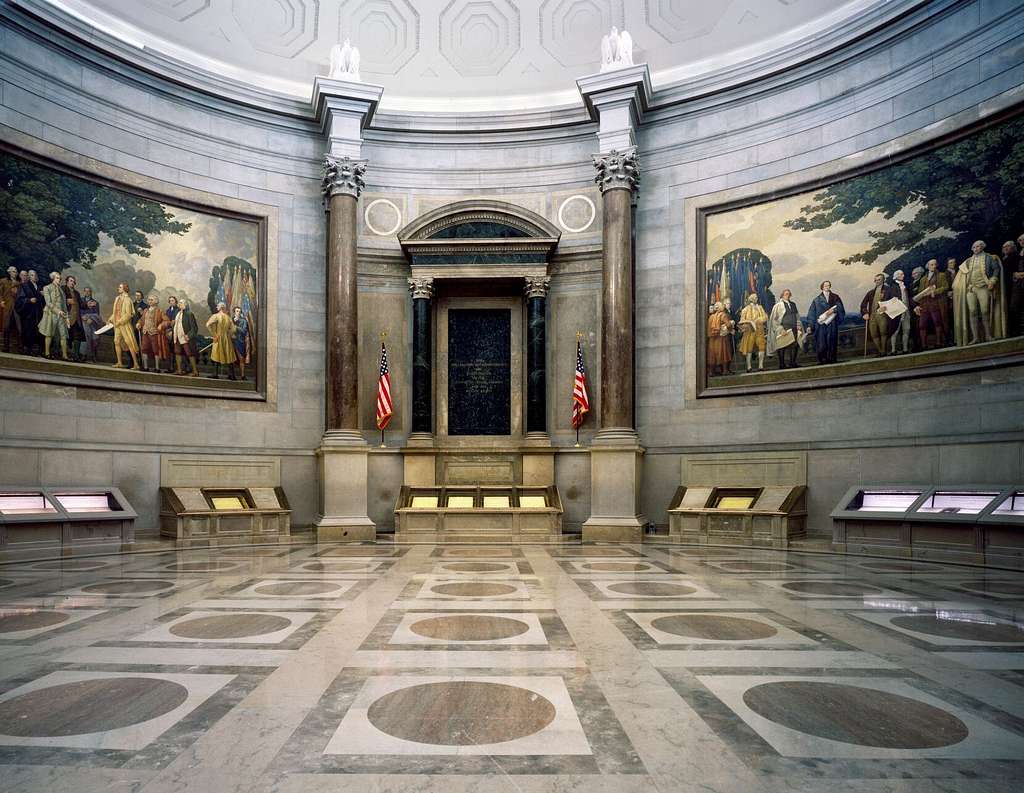
Hall of the Charters of Freedom at the National Archives in Washington, D.C. Photo by Carol M. Highsmith, released to public domain
It’s a very good place to research your American family history.
They have many microfilms there. You can request things in advance, and you’ll be able to go over some material that’s only available at the National Archives in the reading room. They also have guides on-site who will help you and can show you how to order material that may not be available in the reading room. The only issue is that you may need to come back at a later time to review those materials, like a day or two later.
4. Library of Congress, Washington D.C., U.S.
If you’re already in Washington D.C., you shouldn’t miss the Library of Congress. Like with the U.K. National Archives, you need a special access card with your photo. You’ll need some photo ID, preferably two types (for example a passport and a driver’s license), and this access card will be created for you in a building that is kitty-corner to the Congress building. Once you have the card, you’ll be able to enter the Congress building and the library inside it.
The library actually extends beyond the Congress building and is also located in the building behind it. But here’s a little secret: all of these buildings are interconnected underground. So you can go from one building to the other without going out to the street — very convenient if the weather is not the best.
The main Congress building has a cloak room where you can store your coat, backpack, and other personal belongings. You are allowed to bring your phone with you.
The Library of Congress has very nice scanner machines that can scan books and records directly into a flash drive for you. As a general rule, it’s a great idea to bring a thumb drive with you when visiting an archive.
5. The KGB Archive, Lithuania
This is a very peculiar archive that I came across during one of my trips to Lithuania: the KGB Archive. Yes, that’s the KGB, as in the Soviet intelligence agency. Lithuania was once a part of the USSR, and they had a building designated as a jail for the KGB. This institution kept a record of dissidents who were investigated in Lithuania or the area, and they have a nice reading room where you can peruse the documents.
In my personal case, I was interested in Jewish records, so I asked them and they pointed me to a computer. It was a very old computer with a very old database, but I was able to find lots of records that interested me. You can search for particular names or simply browse the database.
I understand that the KGB archive in Lithuania is not the only one of its kind, and that you may find other KGB archives in other countries that are also open to the public.
There you have it: my top 5 most recommended historical archives! Stay tuned for another post on the next 5. And while you wait, a friendly reminder that you don’t need to travel anywhere to conduct historical record research: at MyHeritage, you have 18.8 billion historical records — and counting — at your fingertips!
Search historical records on MyHeritage

Daniel Horowitz is the Genealogy Expert for MyHeritage. Dedicated to Genealogy since 1986, Daniel was the teacher and the study guide editor of the family history project “Searching for My Roots” in Venezuela for 15 years. He was a board member of The International Association of Jewish Genealogical Societies (IAJGS) for 10 years. He is now involved in several crowdsource digitization and transcription projects, and holds a board-level position at The Israel Genealogy Research Association (IGRA). Since 2006 Daniel has been working at MyHeritage liaising with genealogy societies, bloggers, and media, as well as lecturing and attending conferences around the world.
